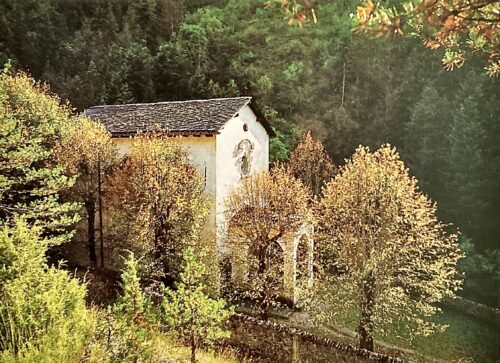
By Cheryl Anderson
“There are in this world only two earthly Paradises…Provence…and the Reading Room of the British Museum.”
—Ford Maddox Ford
Ford Maddox Ford believed Provence was the real France. He declared in his book, New York is Not America, and came to believe, that Paris is not France…he had spent a great deal of time in Paris off and on. While in Provence, Ford became an avid kitchen gardener. He grew Mediterranean things such as aubergines, garlic and peppers and was a proficient cook. Albeit, I read he did tend to make quite a mess. Among Ford’s favorite villages were Arles, Avignon, Aix, but his favorite was Tarascon. From Tarascon he wrote: “Life is so relatively cheap in France…that I shouldn’t wonder if we settled down here for good. Besides, the French make much of me-which at my age is inspiring.” I’ve been to Tarascon twice, years apart.
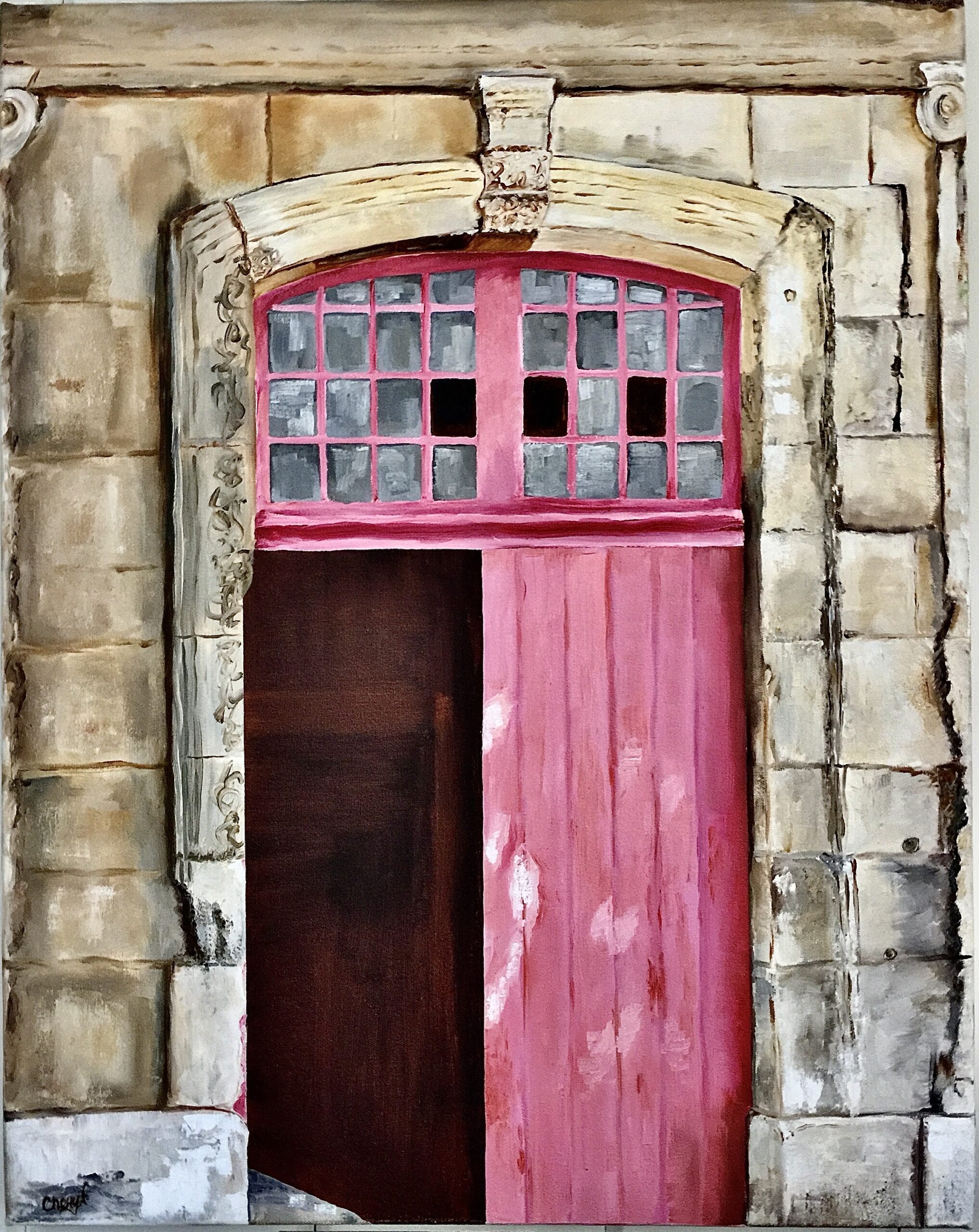
My painting of a faded red door in Tarascon.
In his book, A Mirror to France, Ford presents his thoughts about civilization. He states, “Chivalric generosity, frugality, pure thought and the arts are the first requisites of a Civilization—and the only requisites of a Civilization.” He found this Civilization to be part of the very fabric of Provence…a world he thought to be ideal. Quoting The Guardian in 2010: “Ford’s Provence was an ideal lost world, one of the cradles of civilization, and a reference point in his fiction.” Ford wrote in, The Great Trade Route (1937): “I live in Provence, but I can’t become a Provençal because that, as things go, would be to become French, and I don’t want to become French for reasons that would take too long to tell…No, I want to belong to a nation of Small Producers, with some local, but no national feeling at all.”
Provence is made up of six Departments: Bouches du Rhone, Var, Alpes Maritimes, Vaucluse, Alpes de Haute Provence, and Hautes Alpes. Each has their own distinct characteristics—from the beaches of the Côte d’Azur, to the Gorges du Verdon, to the fragrant fields of lavender in mid-June to mid-August. To see lavender in all its splendid glory, two of the most significant locations are Plateau de Valensole, near Puimoisson, and the Pays de Sault, east of Carpentras, where every year on August 15 there is a festival celebrating the last harvest. Both locations are the largest producers and harvesters of lavender. Another well known lavender field is in Senanque by the one time, much photographed Cistercian abbey.

The iconic picture of lavender by the Cistercian abbey.
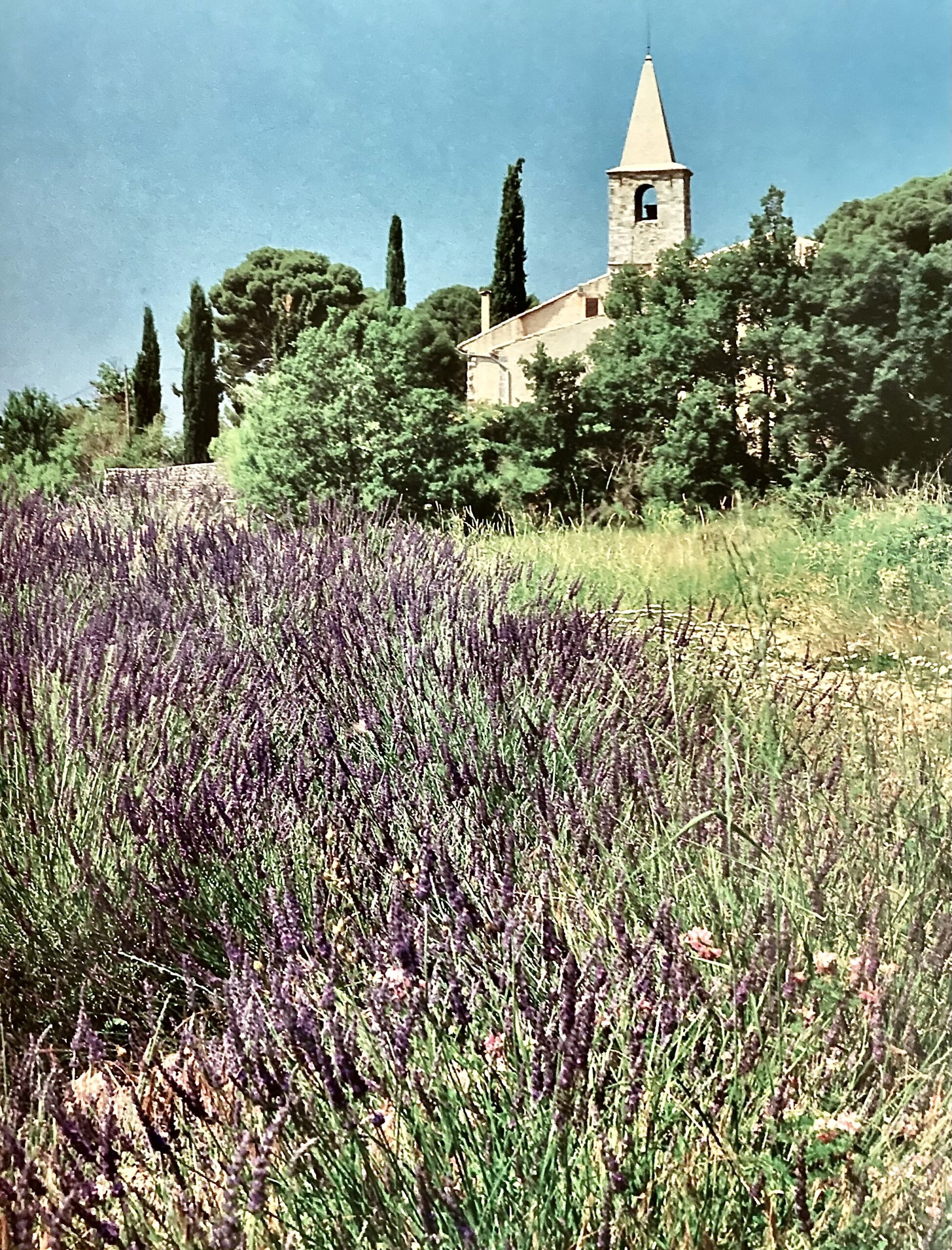
Lavender field on the outskirts of Riez.

Plateau de Velensole landscape showing row after row of lavender.
MOUSTIER-SAINTE-MARIE:

Moustiers-Ste-Marie at a distance.
Moustiers-Sainte-Marie, tucked away in the Gorges du Verdon, has many pottery, (faience), shops. Pottery making is a major, centuries old, quite famous, local industry, and draws thousands of tourists every year. There is a star, called the Cadeno, on a 225m long chain suspended between two cliffs 200m high above the town. It is the symbol of the city…and a very curious sight. “This is apparently the work of St. John of Jerusalem named Blacas who hung it here in the thirteenth century in gratitude for his miraculous release from captivity.” From what I have read, how they managed it is not known. There’s a narrow flight of stairs that lead to the ravine of the pilgrim’s chapel of Notre-Dame-de-Beauvoir. “The pilgrim’s church stands on the site of the Marian shrine built by the monks in the fifth century. The nave stems from the twelfth century and the choir from the fifteenth century.”
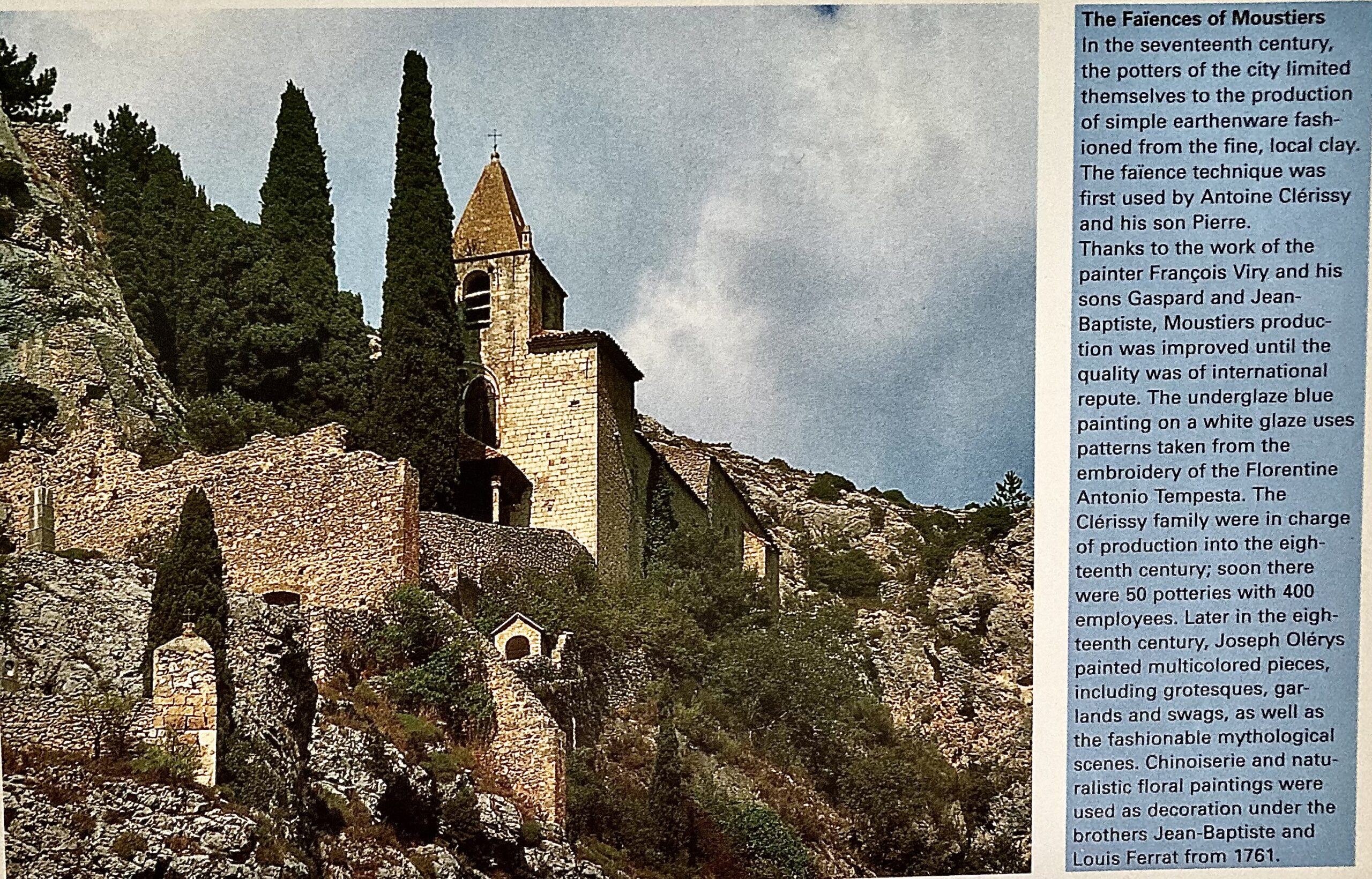
Moustiers-Ste-Marie “Pilgrim chapel of Notre Dame-de-Beauvoir (12the and 15th century) in the ravine behind the city.”
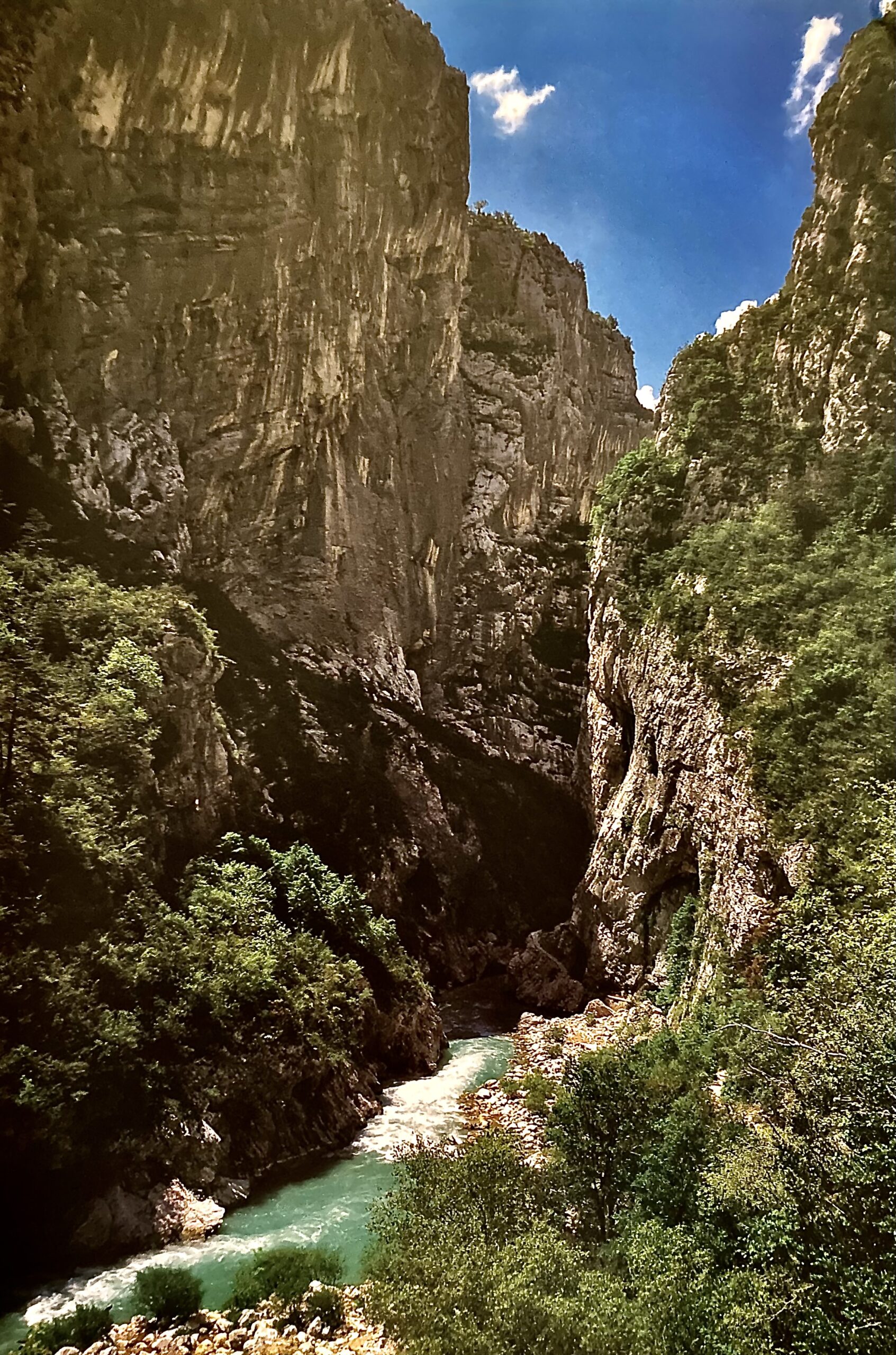
Gorges du Verdon |
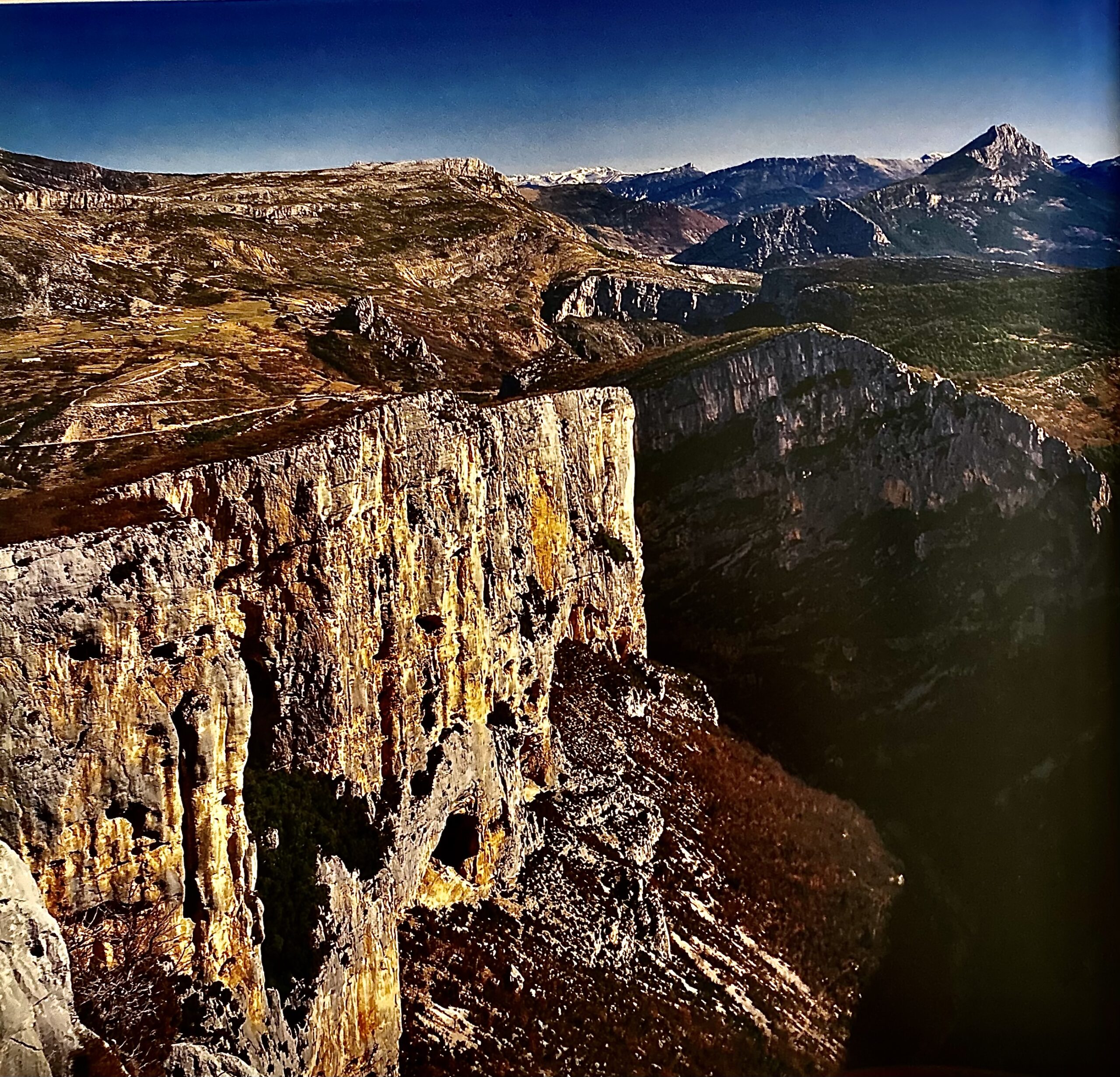
Gorges du Verdon |
Just outside the town of Moustiers-Sainte-Marie, in a charming rural setting, is La Bastide du Moustiers. This small hotel and restaurant is owned by the internationally famed chef, Alain Ducasse. Driving up the shaded winding road leading to the restaurant and charming hotel you begin to relax. The quiet begins to surround you. You announce your arrival in the speaker by the gate to the property…the gate slowly and quietly begins to open. C’est une bonne idée de faire une réservation.
Take the time for a stroll around the charming garden area in the back. Paths go to the left and to the right of an allée…metal arches over the allée add to its charm. In the center is a well with an old-fashioned red hand-pump. Breathe in the delicious aroma of the aromatic herbs and flora that’s growing all around you.
The staff is very helpful, extremely professional, (as you would expect), and makes the entire experience delightful. Once, when the waitress brought the dessert menu to our table she overheard me say, “I just don’t think I can take one more bite”. Her words to me, with a great deal of certainty, were, “Oh yes”. Of course, I did have dessert. I would not want to disappoint!
As you walk away from La Bastide de Moustiers, having just had a sumptuous meal or an overnight stay, memorable may be the adjective that comes to your mind. I’ve had the pleasure to dine at many of his restaurants over the years, but La Bastide is by far my favorite. It mattered not whether I was sitting on the sunny terrace on a beautiful day, inside in the well appointed dining room if it was raining or upstair in a turreted alcove, as each venue has its own, La Bastide charm.
Alain Ducasse’s sleeved, very large, and heavy, coffee table book, J’aime Monaco, is a wonderful pictorial romp through the Côte d’Azur and Provence. I never tire thumbing through the pages, recognizing many of the places photographed and making a plan to visit some of the places pictured I’ve yet to explore. The last time I was there I bought that book, wondering how I was going to pack it, when I was asked if I would like for Ducasse to sign it…of course, I said, yes please. She said they would mail it to me. They did.
On the same road as La Bastide, stop by the small faience factory, Atelier Soleil, where some of the pottery and dishes for the restaurant are manufactured. Purchasing one small piece, (or more), will be a pretty little reminder of a most pleasant day. However, once inside the factory showroom, trust me, it’s hard to resist buying vases, plates, bowls, soap dishes, terrines or table settings with whimsical stylized designs or very traditional designs. The artist/owner is very friendly and glad to show you around or just let you browse. If asked, he will create a design to your own specifications on as many pieces you want and will ship them to your home. Visit their website, soleil-deux.com to see their beautiful pottery…shop online. Follow them on Instagram, @atelier.soleil.moustiers, and see even more. Their seasonal arrangements are so fun. If you have a question, give them a call.
Atelier Soleil satisfies my pottery interest and La Bastide de Moustiers well satisfies my French cuisine hunger. Moustiers is one of the most beautiful villages in France and definitely worth a stop.
vallauris-Golf Juan:
I wanted to see Picasso’s statue, Man with a Sheep. I was not disappointed. It stands in the square where also you’ll find the village church. The bronze statue is of a naked bearded man holding a struggling sheep by its feet. One can almost hear its bleating. Picasso first thought of such a subject in 1942. It’s been noted that the head of the goat was created in Vallauris.
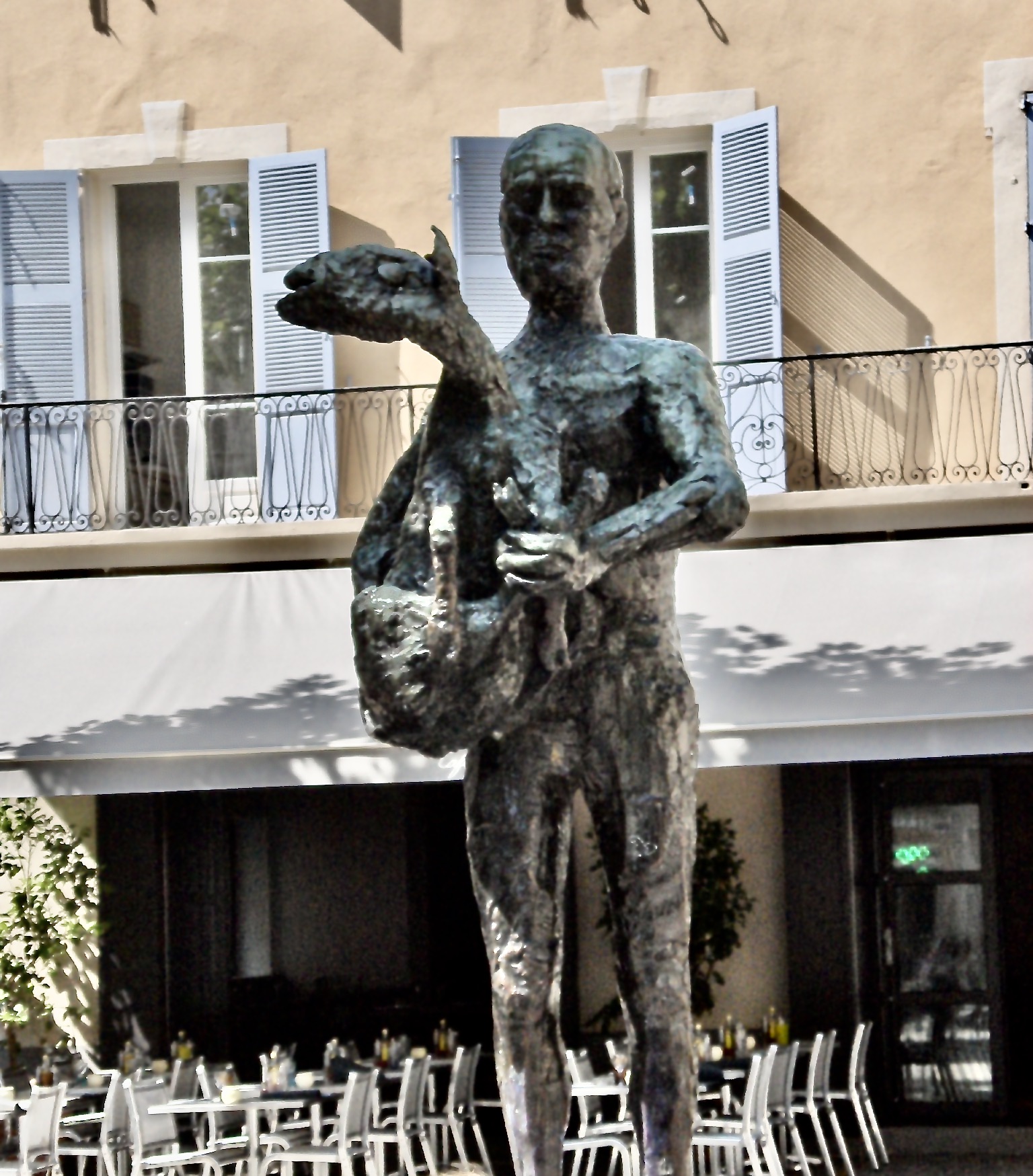
man with a sheep |

man with a sheep |
He pondered what to do for one year and it’s said in just one day, from morning to night, he molded the clay. The poet, Paul Elnard, was with him as he molded the clay…spending his time that day writing. A plaster cast was then made, it “dominated” his Paris studio and “considerably astonished his visitors.” After the war it was cast in bronze. Where to put it. He offered it to Antibes, but after delays and difficulties he withdrew the offer. Vallauris was to be the new home of, Man with a Sheep. Picasso’s, Apollinaire, in the lovely Square Laurent-Prache in Paris is my other favorite Picasso sculpture.

man with a sheep
In 1946, Picasso dropped by Vallauris…at the time he had a home in Golf Juan a few miles away. During this visit he met Suzanne and Georges Ramié, owners of the Madoura Pottery. In Picasso’s mind, the one good potter in town. While he was there he formed clay into figures. The next year he returned and was “delighted” that Ramié had fired them. Thus began his interest in ceramics. Picasso would live in Vallauris from 1948-1955. He resided in an “ugly” little pink villa named, La Galloise. His presence brought other artists to the small rustic village and renewed prosperity to the village…they too put their hands into the clay.

Ceramic Dragon flask by Picasso, 1952.
He bought and renovated Les Fournas that had been a perfumery making it his studio. While there, his output was prolific…creating many ceramics, sculptures, linocuts and paintings. His diptyque masterpiece, War and Peace, was installed in the deconsecrated Chapel of the Chateau de Vallauris in 1959. The chapel had been disused since the Revolution of 1789. “Described optimistically as a “Peace Chapel,” the building and its belligerent frescos channeled Picasso’s personal turmoil into a protest on behalf of the town and the Communist party against the war in Korea.” Vallauris was a Communist governed town.

“War and Peace”, 1952.
Experimenting with shapes, forms, textures, enamels, and glazes he put his own “unique creativity” into the ceramics medium. At the Madoura studio, Picasso designed plates, dishes, vases, jugs, utensils, and other earthenware. Some of the pieces were then painted and decorated with enamel and metal oxides.
The once vibrant pottery industry had greatly slowed down. As Archibald Lyall puts it: “It also had a number of potteries, but these had fallen on evil days when Picasso made his home in the village after the war.” The renaissance of the Vallauris pottery industry in the 1950s was in large part the result of Picasso moving there. Picasso became a freeman of Vallauris.
SAINT-RÉMY DE PROVENCE:
My first visit to Saint-Rémy was forty years ago…time flies. We stayed in Hôtel Chateau de Roussan. At that time it was designated as a “quiet” hotel, a hotel where one could go for rest and relaxation. A physician could recommend such a hotel to their patients…it was that way back then anyway. A quiet hotel was a challenge with a three year old. The grounds were rustic and interesting. Many years later I revisited it and it had changed in appearance, more modern with a postcard rack in the lobby. On this visit I ventured into the town and there found many interesting shops. For another overnight visit in 2016 there was café hopping, lovely meals and shopping, coming home with a coat I wear a lot to this day…as we know, one cannot have too many coats living where we do.

My painting of a pillar and gate with a white chair at Hôtel Chateau de Roussan. The red geranium caught my eye.
St.-Rémy is also where Vincent Van Gogh spent time and did some of his loveliest and most significant work. Suffering so intensely from severe mental and physical conditions, on May 8, 1889 Vincent voluntarily entered the Asylum of Saint-Paul-de-Mauisole located just outside of St.-Rémy-de-Provence. His accommodations consisted of two rooms— one serving as a studio. Vincent describes his new accommodations at the asylum thusly: “I have two views of the gardens and the asylum in which this place looks very attractive. I’ve tried to reconstruct as it might have been, simplifying and accentuating the proud and unchanging nature of the pine trees and the clumps of cedar against the blue.”
His mental health did not seem to effect his work except for those brief periods of deep despair and disquiet—he felt these periods more reflected simply his mood. Nature became important subject matter— including trees, tree trunks, the landscape and even butterflies. To Vincent caterpillars represented the opportunity for transformation and flowers in bud represented the cycle of life. A notable work of art from his time in Saint-Rémy is,The Starry Night—it was the view from his window of the asylum. In this painting, one can easily see how his mind was swirling. Irises grew in the garden of the clinic which prompted him to paint, Irises.
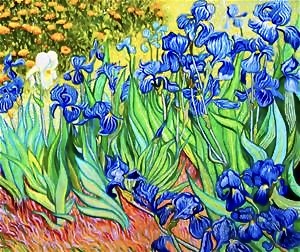
Van Gogh’s, Irises, May 1889.
La BRIQUE:

Watch tower on the outskirts of La Brique.
In the north east corner of the Alpes-Maritimes, the village La Brique is noted as being beautiful. I’ve not visited, but its description is intriguing. It lies among the vineyards of of the Levense valley. Schist houses (houses made of crystalline metamorphic stone) are below the ruins of the castle and tower of the Lascaris.

La Brique below the cliffs of the Cime de Durasca. Romanesque bell-tower of Saint-Martin to the left in the picture.

La Brique below the cliffs of the Cime de Durasca. Romanesque bell-tower of Saint-Martin to the left in the picture.

The pilgrim church, Notre-Dame-des-Fontaines, oft times noted as the Sistine Chapel of the Alps, is where inside the chapel are beautiful early 15th century frescoes in the nave painted by the Renaissance Primitive artist Canavesio. However, the chancel panels, that were damaged covered under a layer of wash, discovered in c1950, were painted by Jean Balelson in c1451. These frescoes are the major attraction for the village. The chapel is a few kilometers east of the town in the woods. The setting is said to be peaceful and the design of the small chapel simple and unassuming. Over and over, the chapel is described as simple by various authors. Perhaps not a chapel one might otherwise stop to see, but, oh my, quite a beautiful surprise lies within belying the simplicity of the structure.

Notre-Dame-des-Fontaines nestled in the quiet of the forest.

A map of chapel locations
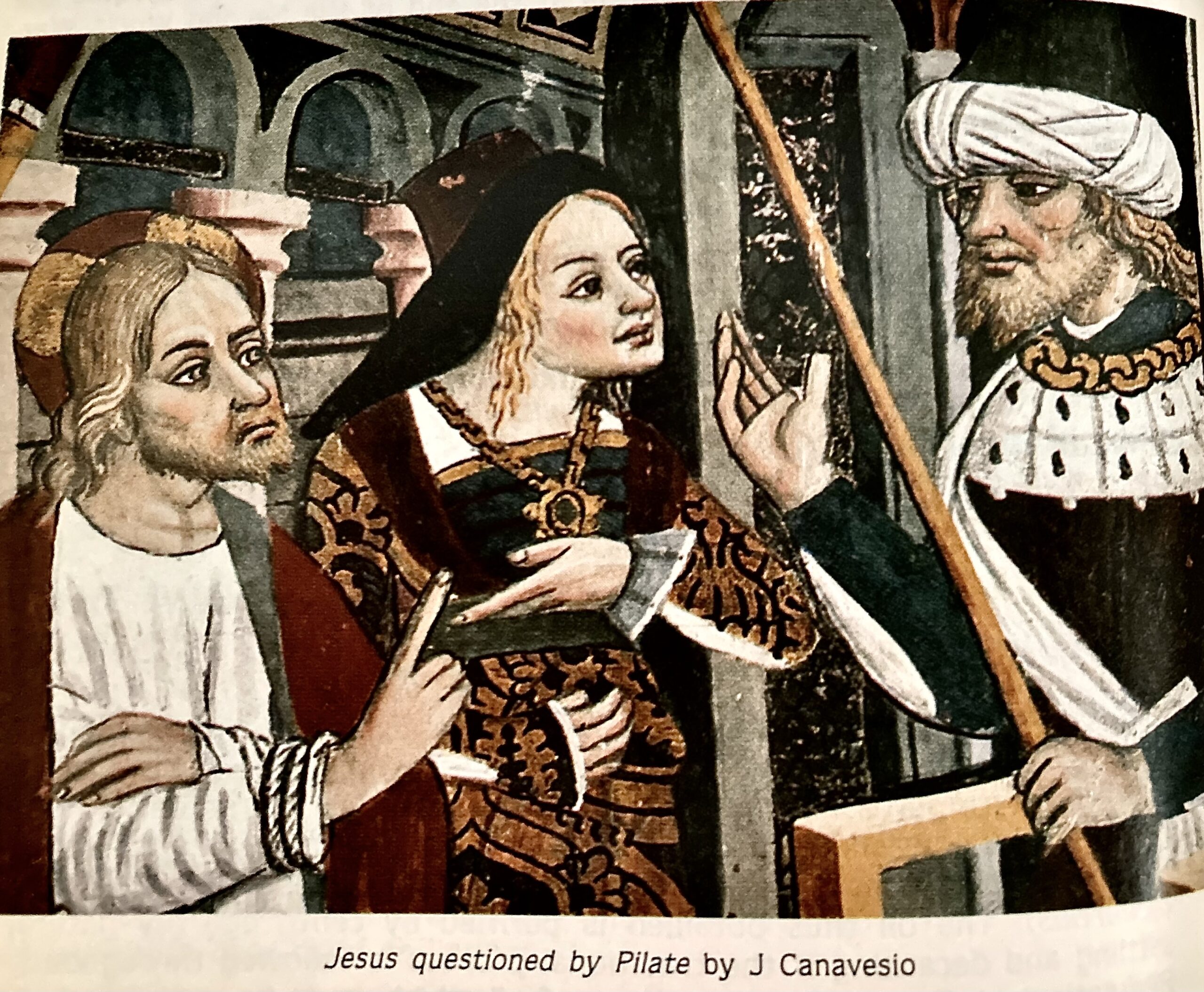 |
 |
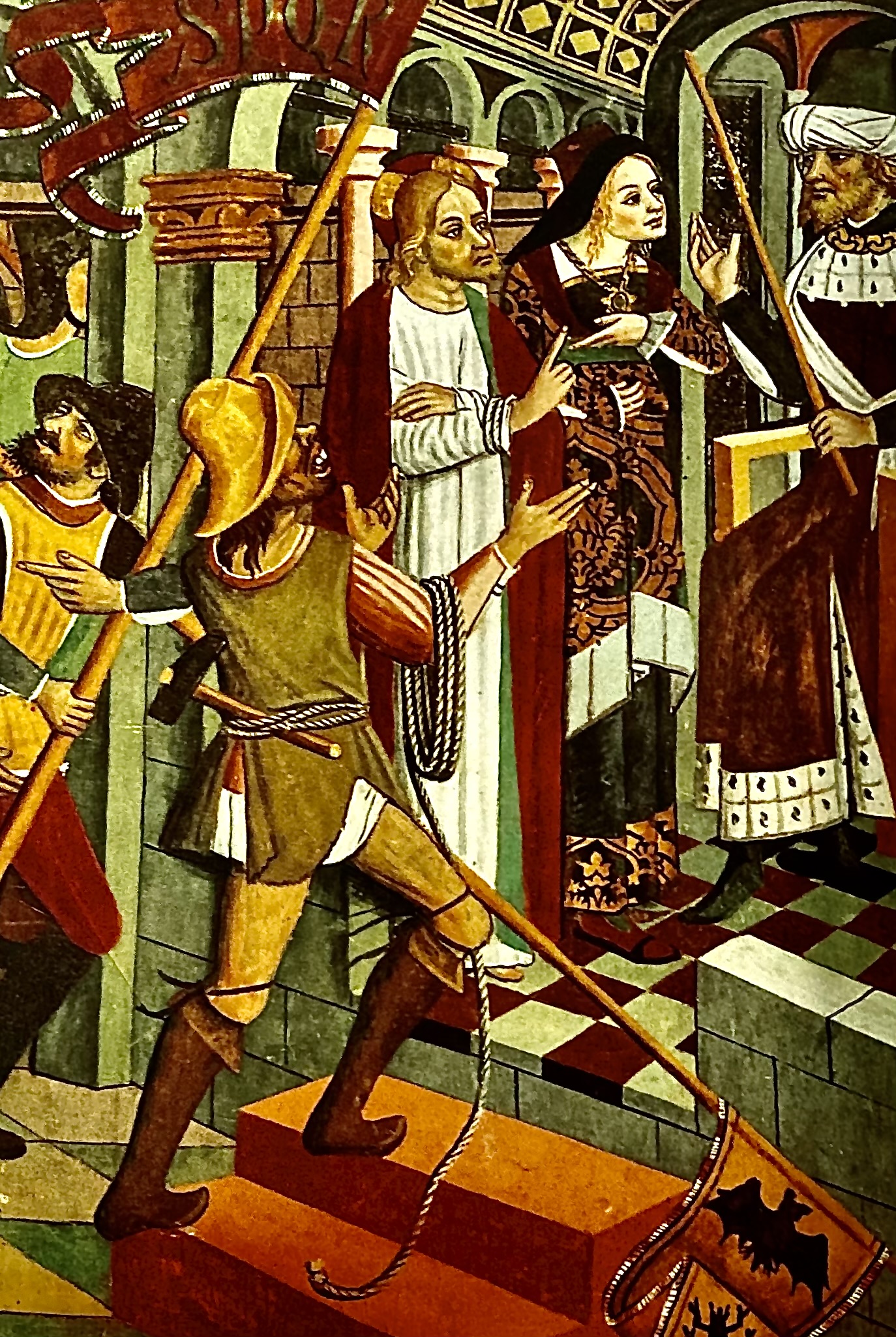 |
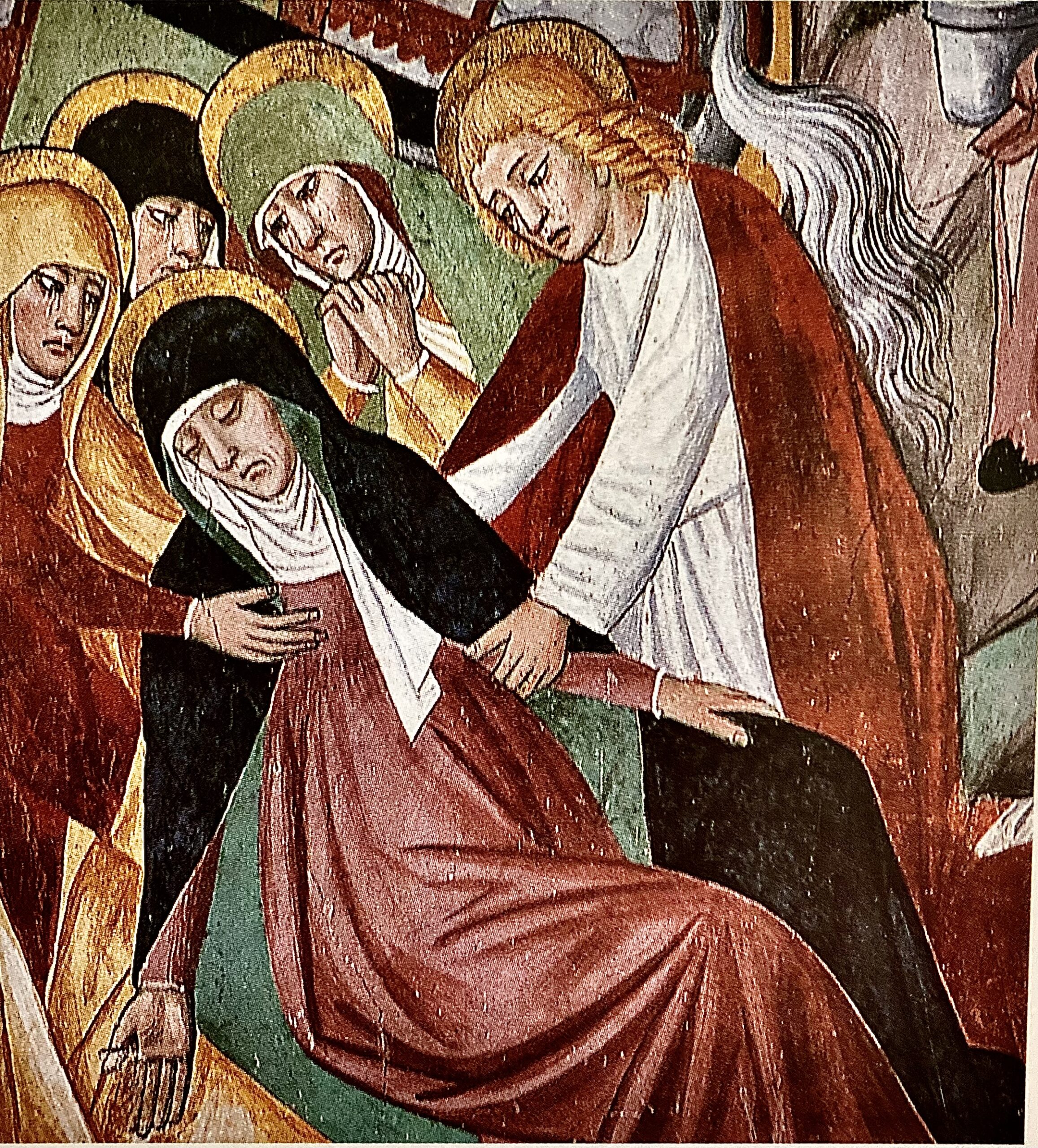 |
Fresco in the chapel.
In closing, I wonder, will you find Ford’s “Chivalric generosity” while visiting villages provençaux? Enjoy Provence…wherever it may take you. There is so much to see.
Bonne vacance!
*villages in Provence I have written about for Classic Chicago Magazine include:
Tourtour, L’Isle-sur-la-Sorgue, La Villa Santo Sospir: A Cocteau Surprise, Points of interest in Menton, Gorbio, La Colombe d’Or, Chateau de la Chèvre d’Or, La Turbie, Èze Village, Mirazur (an interview with Chef Mauro Colagreco), An interview with Mme Danièle Nöel Roux of Colombe d’Or, La Bastide de Moustiers, Sanctuaire Notre-Dame-de- Laghet, Van Gogh, and St-Paul-de-Vence.
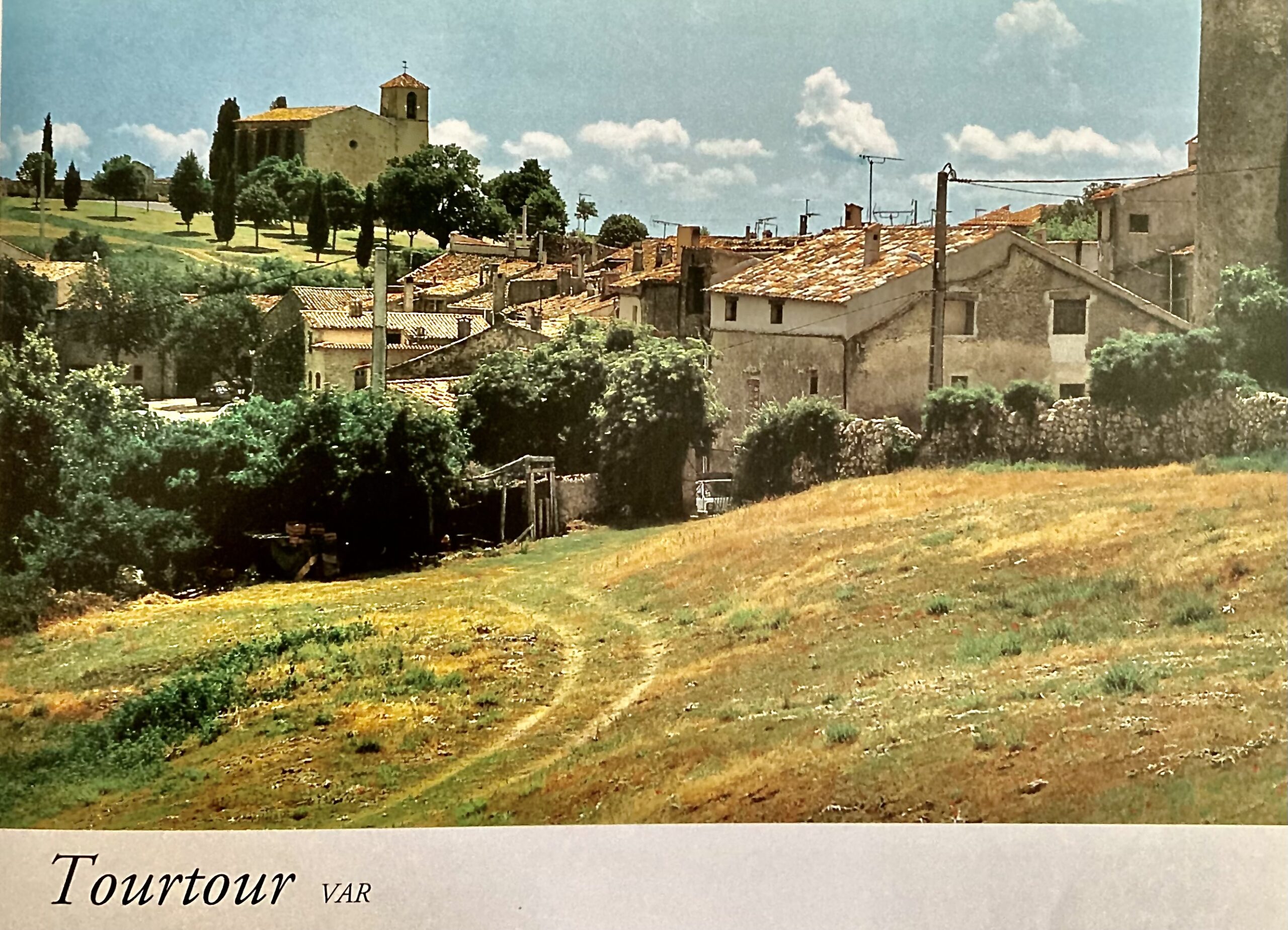
Tourtour, le village dans le ciel de Provence.

A village like no other. |

Serene and lovely. |
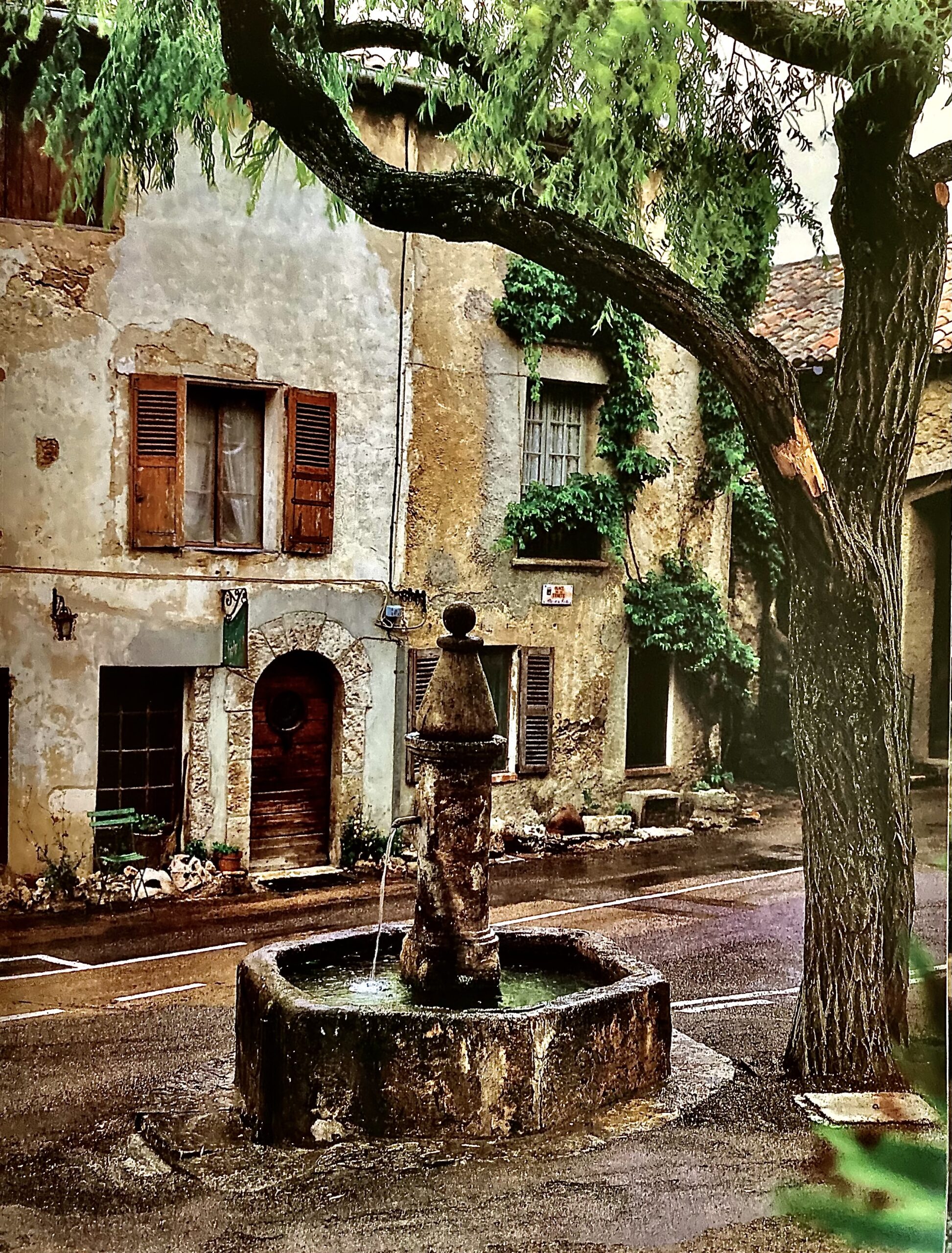
History along every pathway. |
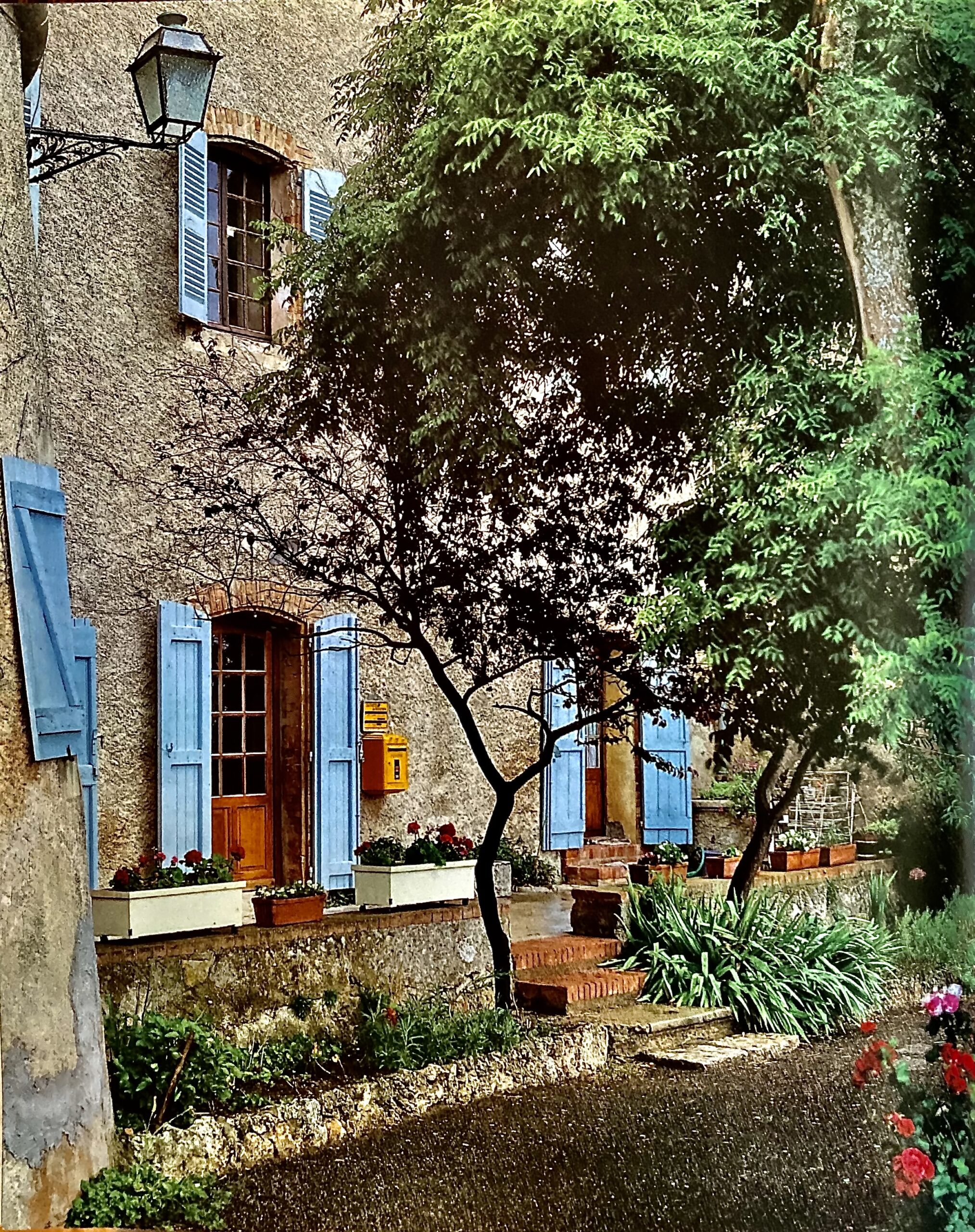
Blue shutters welcome you. |

Where might those ancient, well-worn stairs lead?

Tourtour views.
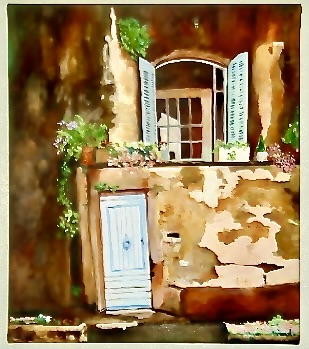
My painting from a photo I took of a facade in Villecroze.
Passing through on a rainy day, I took a picture whose image made it to my canvas. Although there are caves to tour, April to September, I spent my time perusing the antique stores.

My painting from a photo I took in Villefranche-sur-Mer.
Towels and bathing suits drying on the balcony after a happy, sunny day at the beach.

Former cathedral of Riez built in the 15th century, rebuilt after the Revolution. Lavender festivals are held in Riez and is oft times referred to as the lavender capital of Provence. The fields “cover the surrounding Plateau de Valensole.” A beautiful village in the Alpes-de-Haute-Provence. Perhaps a stop on your way to Moustiers-Sainte-Marie.

One cannot help but think of lavender when Provence comes to mind.
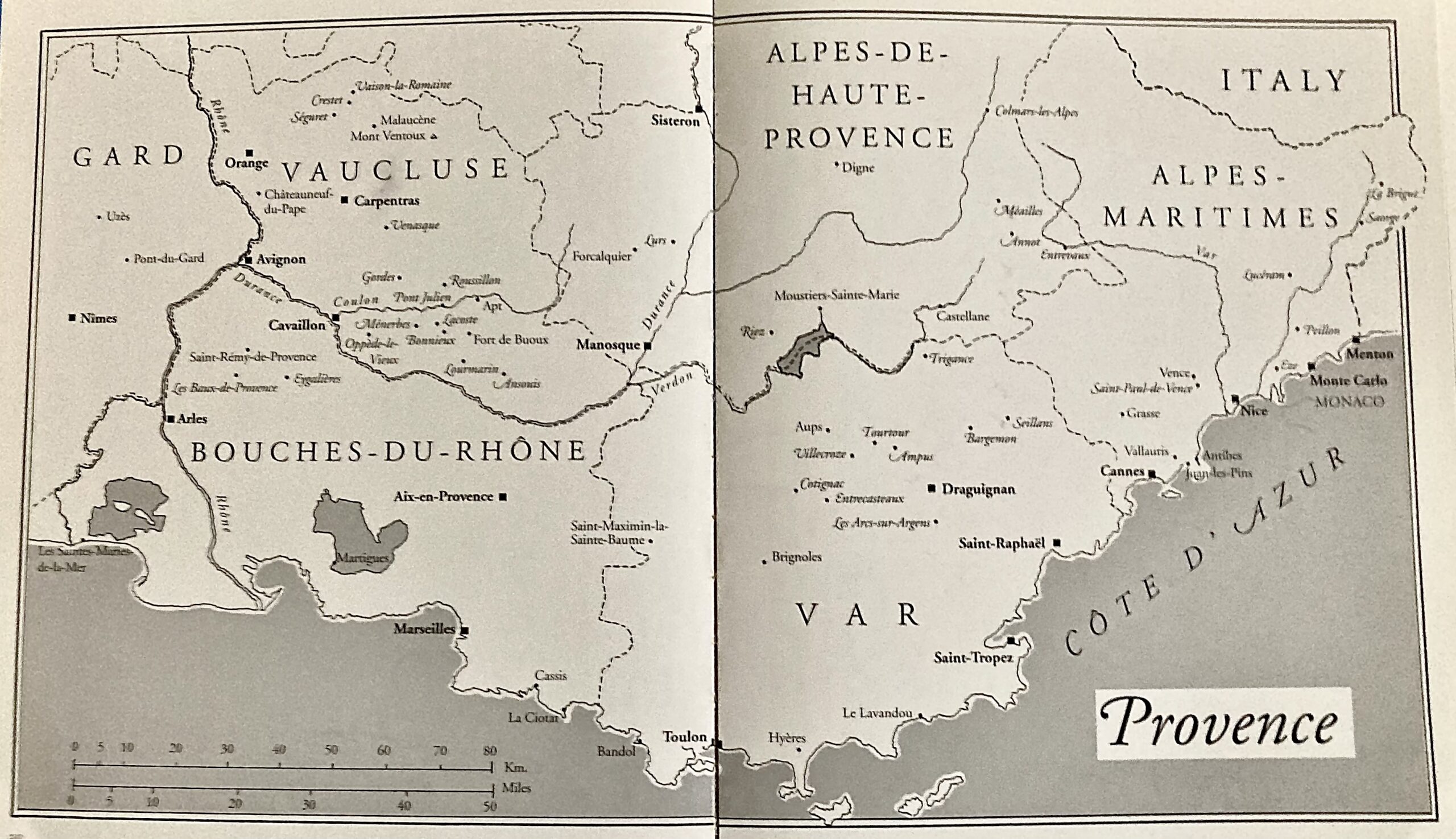
The 6 Departments of Provence.


